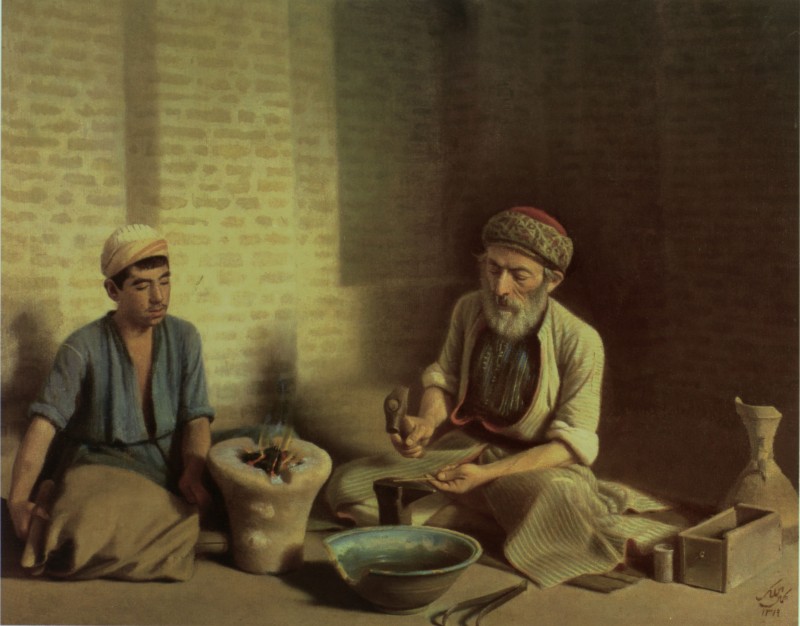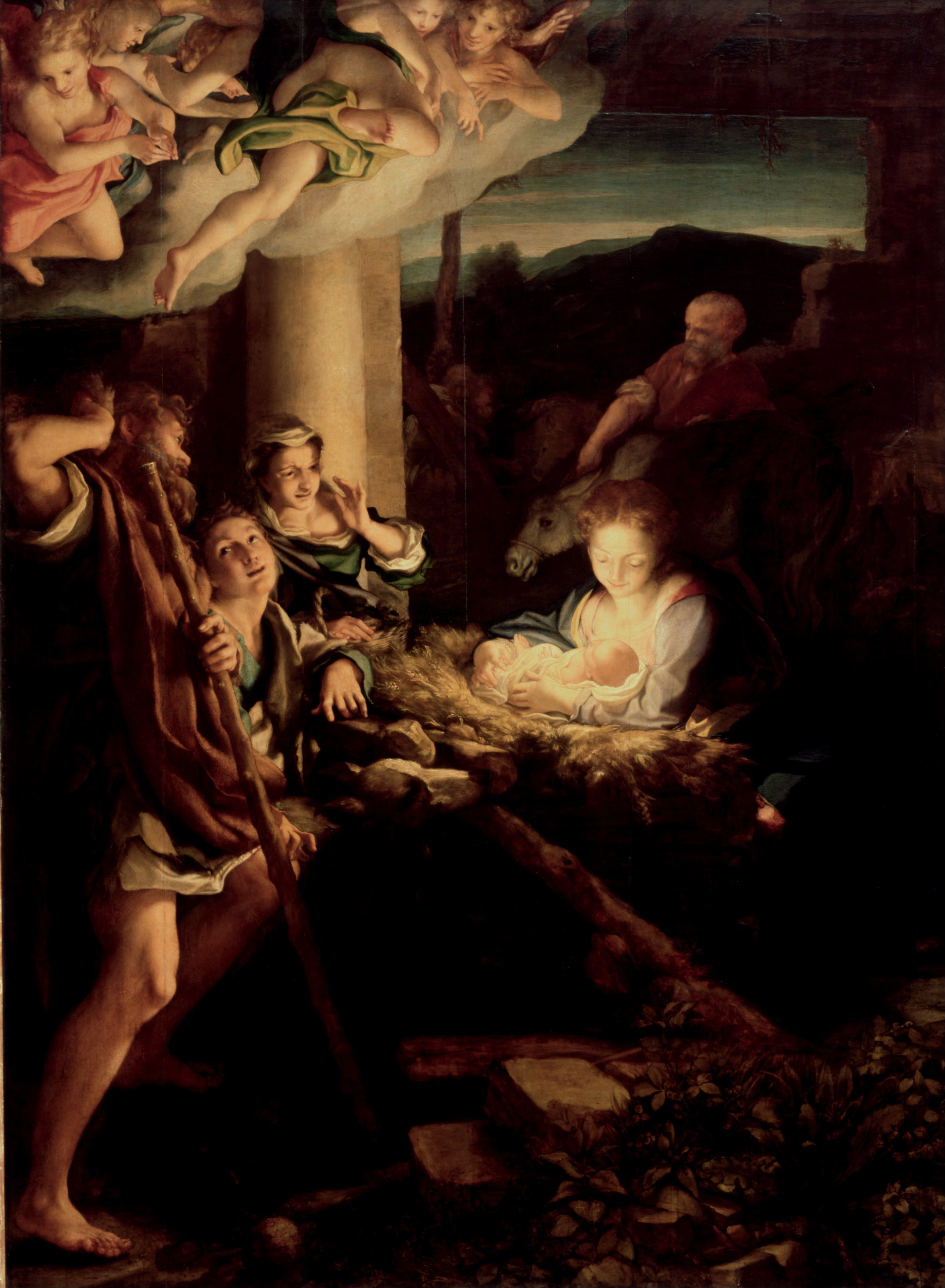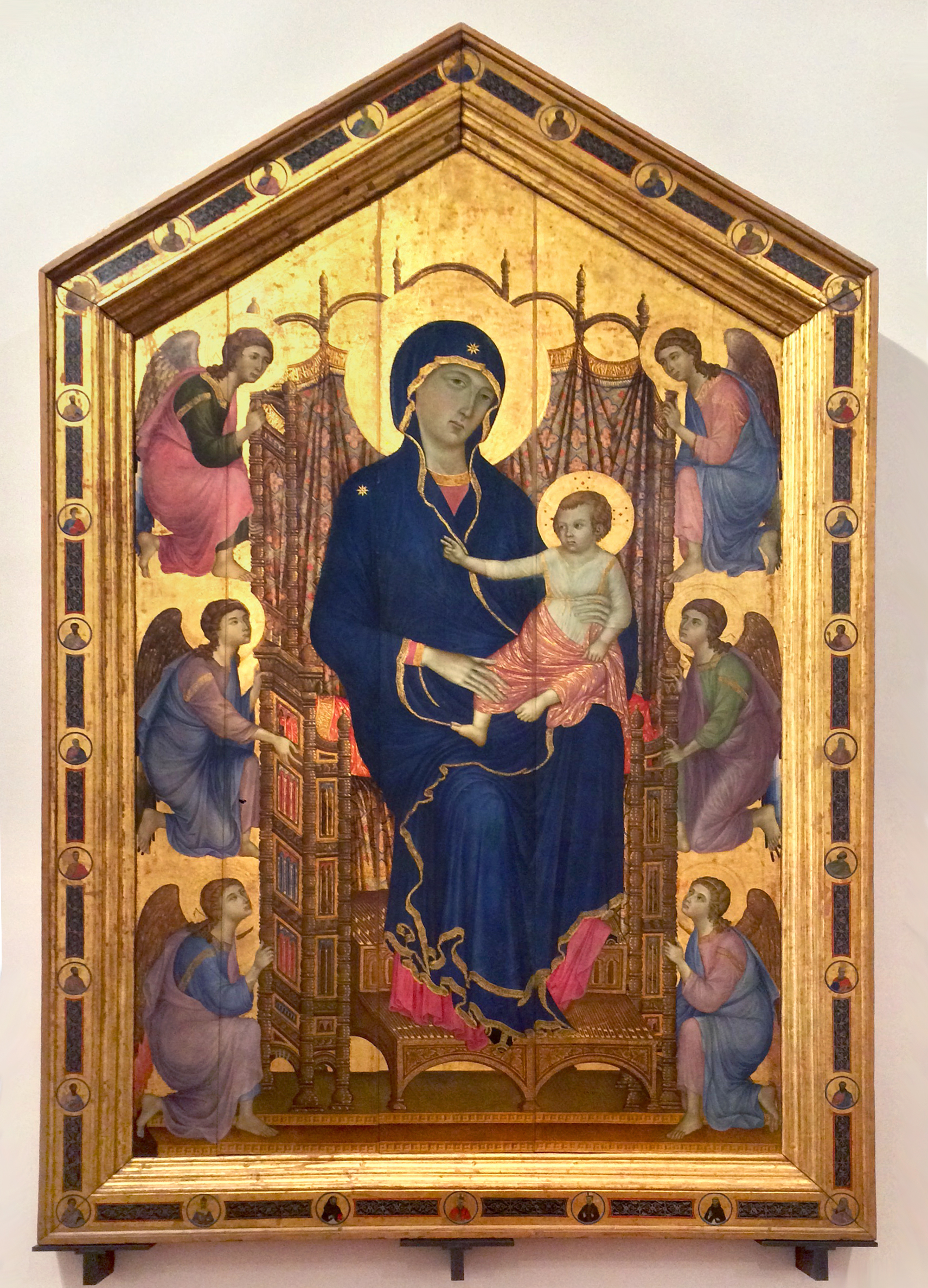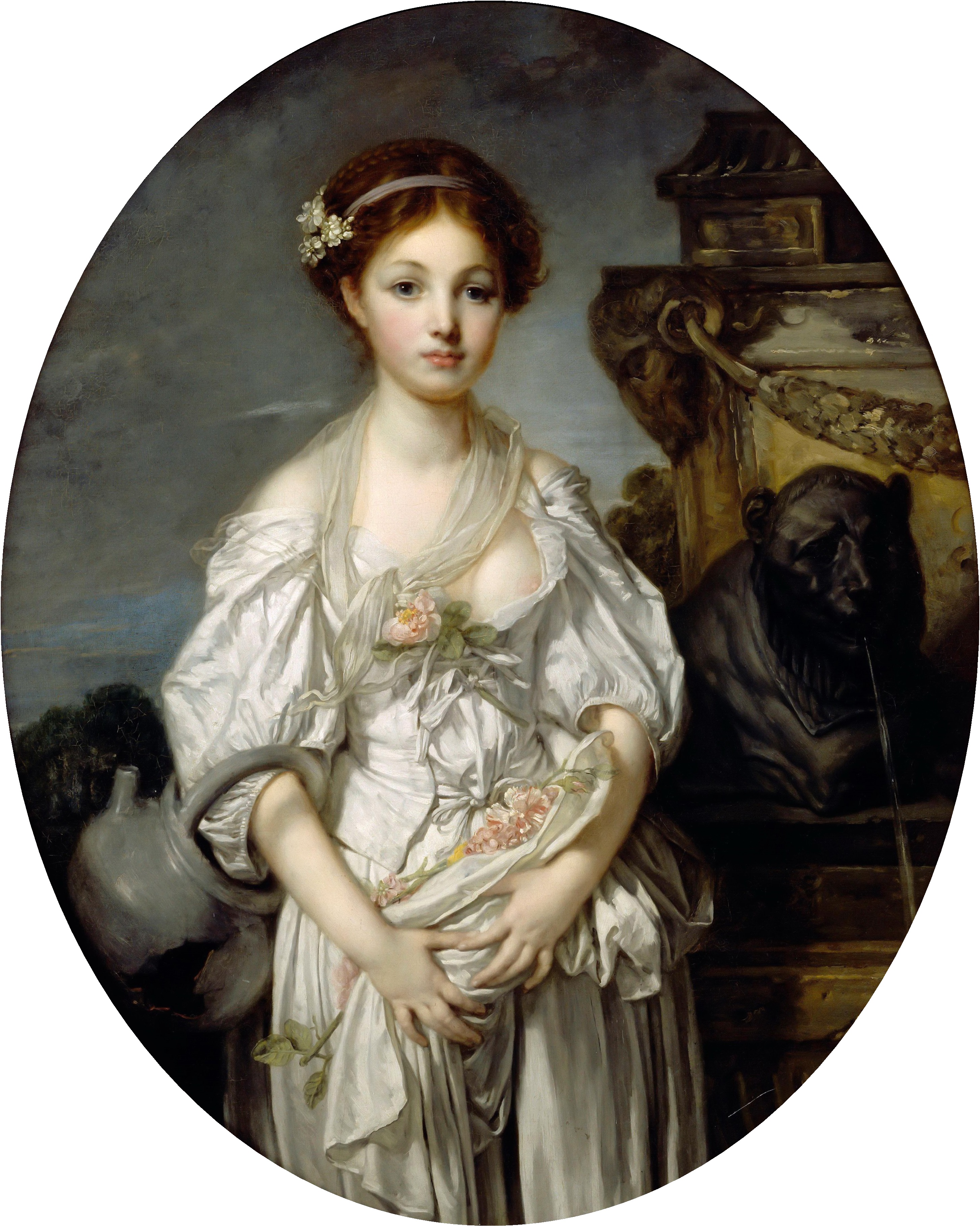|
Johann Eleazar Zeissig
Johann Eleazar Zeissig, also known as Schenau (7 November 1737 – 23 August 1806), was a German genre, portrait and porcelain painter, and engraver; director of the Royal Academy of Arts in Dresden. Life Schenau was born in 1737, the son of Elias Zeissig and Anna Elisabeth (née Paul), poor Damask weavers, of Großschönau, near Zittau in Saxony. Together with his five sisters, he was tutored by his father in arithmetic, writing, reading and also learnt the trade of Damask weaving. He showed an early talent for painting and drawing, and was sent away at the age of twelve to study art in Dresden, where he was also employed as a lawyer's clerk. Through the help of a pupil of Anton Raphael Mengs, he was accepted at the Dresden art school. Here, Schenau was taught by Charles-François de Silvestre, the son of the director of the school, Louis de Silvestre. In 1756, after the outbreak of the Seven Years' War, he accompanied the Sylvestre brothers to Paris, where he stayed until ... [...More Info...] [...Related Items...] OR: [Wikipedia] [Google] [Baidu] |
Johann Eleazar Schenau Von Christian Friedrich Stölzel 1787
Johann, typically a male given name, is the German form of ''Iohannes'', which is the Latin form of the Greek name ''Iōánnēs'' (), itself derived from Hebrew name '' Yochanan'' () in turn from its extended form (), meaning "Yahweh is Gracious" or "Yahweh is Merciful". Its English language equivalent is John. It is uncommon as a surname. People People with the name Johann include: Mononym * Johann, Count of Cleves (died 1368), nobleman of the Holy Roman Empire * Johann, Count of Leiningen-Dagsburg-Falkenburg (1662–1698), German nobleman *Johann, Prince of Hohenzollern-Sigmaringen (1578–1638), German nobleman A–K * Johann Adam Hiller (1728–1804), German composer * Johann Adam Reincken (1643–1722), Dutch/German organist * Johann Adam Remele (died 1740), German court painter * Johann Adolf I, Duke of Saxe-Weissenfels (1649–1697) * Johann Adolph Hasse (1699-1783), German Composer * Johann Altfuldisch (1911—1947), German Nazi SS concentration camp officer executed f ... [...More Info...] [...Related Items...] OR: [Wikipedia] [Google] [Baidu] |
Académie Royale De Peinture Et De Sculpture
The Académie royale de peinture et de sculpture (; ) was founded in 1648 in Paris, France. It was the premier art institution of France during the latter part of the Ancien Régime until it was abolished in 1793 during the French Revolution. It included most of the important painters and sculptors, maintained almost total control of teaching and exhibitions, and afforded its members preference in royal commissions. Founding In the 1640s, France's artistic life was still based on the medieval system of guilds like the Académie de Saint-Luc which had a tight grip on the professional lives of artists and artisans alike. Some artists had managed to get exemptions but these were based on favoritism rather than merit. According to the 17th century ''Mémoires'' about the founding of the ''Académie royale'', a few "superior men" who were "real artists", suffered and felt humiliated under the guild system. In view of increasing pressure by the Parisian guilds for painters and s ... [...More Info...] [...Related Items...] OR: [Wikipedia] [Google] [Baidu] |
Goldsmith
A goldsmith is a Metalworking, metalworker who specializes in working with gold and other precious metals. Modern goldsmiths mainly specialize in jewelry-making but historically, they have also made cutlery, silverware, platter (dishware), platters, goblets, decorative and serviceable utensils, and ceremonial or religious items. Goldsmiths must be skilled in forming metal through file (tool), filing, brazing, soldering, sawing, forging, Casting (metalworking), casting, and polishing. The trade has very often included jewelry-making skills, as well as the very similar skills of the silversmith. Traditionally, these skills had been passed along through apprenticeships; more recently jewelry arts schools, specializing in teaching goldsmithing and a multitude of skills falling under the jewelry arts umbrella, are available. Many universities and junior colleges also offer goldsmithing, silversmithing, and metal arts fabrication as a part of their fine arts curriculum. Gold Compar ... [...More Info...] [...Related Items...] OR: [Wikipedia] [Google] [Baidu] |
Sèvres
Sèvres (, ) is a French Communes of France, commune in the southwestern suburbs of Paris. It is located from the Kilometre zero, centre of Paris, in the Hauts-de-Seine department of the Île-de-France region. The commune, which had a population of 23,251 as of 2018, is known for its famous porcelain production at the ''Manufacture nationale de Sèvres'', which was also where the Treaty of Sèvres (1920) was signed. Geography Situation Sèvres is a commune in the western suburbs of Paris, to the southwest of the centre of Paris, with an eastern edge by the river Seine. The commune borders Île Seguin, an island in the Seine, in the commune of Boulogne-Billancourt, adjoining Sèvres. File:Map commune FR insee code 92072.png, Map of the commune File:Sèvres map.svg, View of the commune of Sèvres in red on the map of Paris and the "Petite Couronne" File:SEVRES - L'Embarcadaire.jpg, Banks of the Seine in the early 20th century. At that time, the river was an important transpor ... [...More Info...] [...Related Items...] OR: [Wikipedia] [Google] [Baidu] |
China Painter
China painting, or porcelain painting, is the decoration of glazed porcelain objects, such as plates, bowls, vases or statues. The body of the object may be hard-paste porcelain, developed in China in the 7th or 8th century, or soft-paste porcelain (often bone china), developed in 18th-century Europe. The broader term ceramic painting includes painted decoration on lead-glazed earthenware such as creamware or tin-glazed pottery such as maiolica or faience. Typically the body is first fired in a kiln to convert it into a hard porous biscuit or bisque. Underglaze decoration may then be applied, followed by glaze, which is fired so it bonds to the body. The glazed porcelain may then be painted with overglaze decoration and fired again to bond the paint with the glaze. Most pieces use only one of underglaze or overglaze painting, the latter often being referred to as "enamelled". Decorations may be applied by brush or by stenciling, transfer printing and screen printing. Porcelain ... [...More Info...] [...Related Items...] OR: [Wikipedia] [Google] [Baidu] |
Titian
Tiziano Vecellio (; 27 August 1576), Latinized as Titianus, hence known in English as Titian ( ), was an Italian Renaissance painter, the most important artist of Renaissance Venetian painting. He was born in Pieve di Cadore, near Belluno. Titian was one of the most versatile of Italian painters, equally adept with portraits, landscape backgrounds, and mythological and religious subjects. His painting methods, particularly in the application and use of colour, exerted a profound influence not only on painters of the late Italian Renaissance, but on future generations of Art of Europe, Western artists. His career was successful from the start, and he became sought after by patrons, initially from Venice and its possessions, then joined by the north Italian princes, and finally the Habsburgs and the papacy. Along with Giorgione, he is considered a founder of the Venetian school of Italian Renaissance painting. In 1590, the painter and art theorist Giovanni Paolo Lomazzo describe ... [...More Info...] [...Related Items...] OR: [Wikipedia] [Google] [Baidu] |
Guido Reni
Guido Reni (; 4 November 1575 – 18 August 1642) was an Italian Baroque painter, although his works showed a classical manner, similar to Simon Vouet, Nicolas Poussin, and Philippe de Champaigne. He painted primarily religious works, but also mythological and allegorical subjects. Active in Rome, Naples, and his native Bologna, he became the dominant figure in the Bolognese School that emerged under the influence of the Carracci. Biography Born in Bologna into a family of musicians, Guido Reni was the only child of Daniele Reni and Ginevra Pozzi.Spear, Richard E. "Reni, Guido". ''Grove Art Online. Oxford Art Online''. Oxford University Press. Apprenticed at the age of nine to the Bolognese studio of Denis Calvaert, he was soon joined in that studio by Francesco Albani, Albani and Domenichino. When Reni was about twenty years old, the three Calvaert pupils migrated to the rising rival studio, named ''Accademia degli Incamminati'' (Academy of the "newly embarked", or progre ... [...More Info...] [...Related Items...] OR: [Wikipedia] [Google] [Baidu] |
Antonio Da Correggio
Antonio Allegri da Correggio (August 1489 – 5 March 1534), usually known as just Correggio (, also , , ), was an Italian Renaissance painter who was the foremost painter of the Parma school of the High Renaissance, who was responsible for some of the most vigorous and sensuous works of the sixteenth century. In his use of dynamic composition, illusionistic perspective and dramatic foreshortening, Correggio prefigured the Baroque art of the seventeenth century and the Rococo art of the eighteenth century. He is considered a master of chiaroscuro. Early life Antonio Allegri was born in Correggio, a small town near Reggio Emilia. His date of birth is uncertain (around 1489). His father was a merchant. Otherwise little is known about Correggio's early life or training. It is, however, often assumed that he had his first artistic education from his father's brother, the painter Lorenzo Allegri. In 1503–1505, he was apprenticed to Francesco Bianchi Ferrara in Modena, where he ... [...More Info...] [...Related Items...] OR: [Wikipedia] [Google] [Baidu] |
Old Master
In art history, "Old Master" (or "old master")Old Masters Department Christies.com. refers to any painting, painter of Aptitude, skill who worked in Europe before about 1800, or a painting by such an artist. An "old master print" is an original printmaking, print (for example an engraving, woodcut, or etching) made by an artist in the same period. The term "old master drawing" is used in the same way. In theory, "Old Master" applies only to artists who were fully trained, were Master craftsman, Masters of their local Guild of Saint Luke, artists' guild, and worked independently, but in practice, paintings produced by pupils or workshops are often included in the scope of the term. Therefore, beyond a certain level of competence, date rather than quality is the criterion for using the ... [...More Info...] [...Related Items...] OR: [Wikipedia] [Google] [Baidu] |
Jean-Baptiste Greuze
Jean-Baptiste Greuze (, 21 August 1725 – 4 March 1805) was a French painter of portraits, genre scenes, and history painting. Early life Greuze was born at Tournus, a market town in Burgundy. He is generally said to have formed his own talent; at an early age his inclinations, though thwarted by his father, were encouraged by a Lyonnese artist named Grandon, or Grondom, who enjoyed during his lifetime considerable reputation as a portrait-painter. Grandon not only persuaded Greuze's father to give way to his son's wishes, and permit the boy to accompany him as his pupil to Lyon, but, when at a later date he left Lyon for Paris, Grandon carried young Greuze with him. Career Settled in Paris, Greuze worked from the living model in the school of the Royal Academy, but did not attract the attention of his teachers; and when he produced his first picture, ''Le Père de famille expliquant la Bible a ses enfants'', considerable doubt was felt and shown as to his share in its ... [...More Info...] [...Related Items...] OR: [Wikipedia] [Google] [Baidu] |
Edmé Bouchardon
Edmé Bouchardon (; 29 May 169827 July 1762) was a French sculptor best known for his neoclassical statues in the gardens of the Palace of Versailles, his medals, his equestrian statue of Louis XV of France for the Place de la Concorde (destroyed during the French Revolution); and for the Fountain of Four Seasons in Paris. He was also a draftsman and painter, and made celebrated series of engravings of working-class Parisians.''Le Petit Robert des Noms Propres'', Paris (2010) Biography Bouchardon was born in Chaumont-en-Bassigny, the son of a sculptor and architect, Jean-Baptiste Bouchardon. He learned sculpture first in the studio of his father, and then with Guillaume Coustou. He won the Prix de Rome of the Académie royale de peinture et de sculpture in 1722, and as a consequence lived and worked in Rome from 1722 to 1732. He resisted the more ornate tendencies of the Rocaille style, and moved toward neoclassicism. While in Rome, he specialized in busts of disting ... [...More Info...] [...Related Items...] OR: [Wikipedia] [Google] [Baidu] |
Maurice Quentin De La Tour
Maurice Quentin de La Tour (; 5 September 1704 – 17 February 1788) was a French painter who worked primarily with pastels in the Rococo style. Among his most famous subjects were Voltaire, Rousseau, Louis XV and the Madame de Pompadour. Biography Maurice Quentin de La Tour was born in Saint-Quentin, Aisne, Saint-Quentin, the third son of a musician, François de La Tour. François was from Laon and he was the son of a master mason, Jean de La Tour, of Laon and Saint-Quentin, who died in 1674. François de La Tour apparently was successively a trumpet-player for the rifle regiment of the Duc du Maine, and musician to the master of the collegiate church of Saint-Quentin. He is popularly said to have disapproved of his son taking up the arts, but there is nothing to support this. According to François Marandet in 2002, an apprenticeship was arranged for the young Maurice, with a painter named Dupouch, from 12 October 1719, but it is not known when this contract was terminated. Lit ... [...More Info...] [...Related Items...] OR: [Wikipedia] [Google] [Baidu] |








